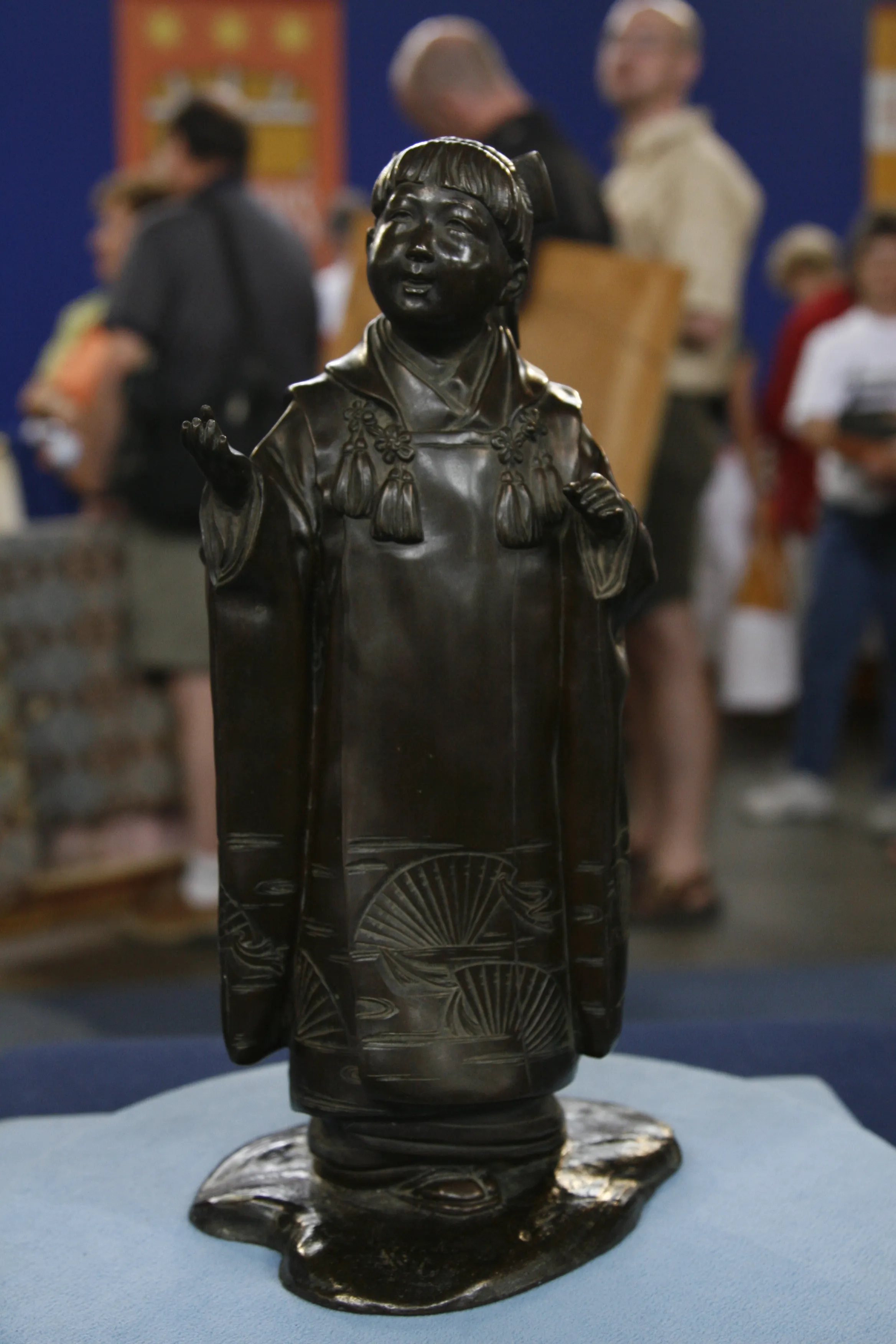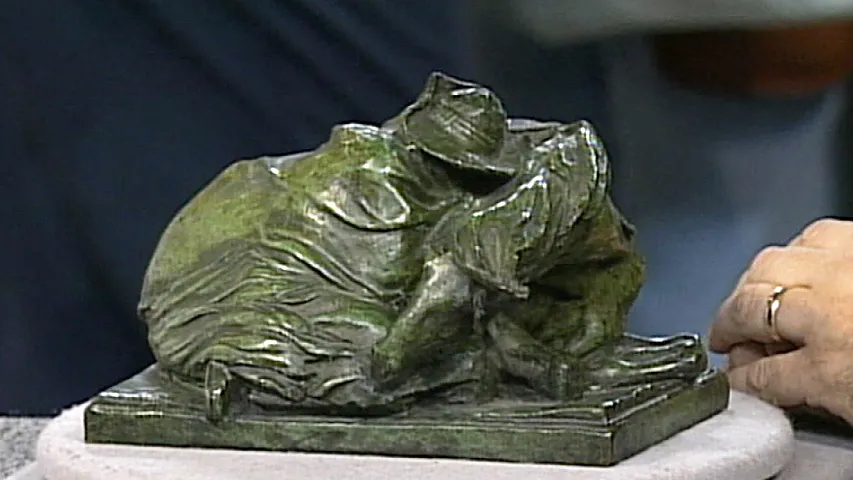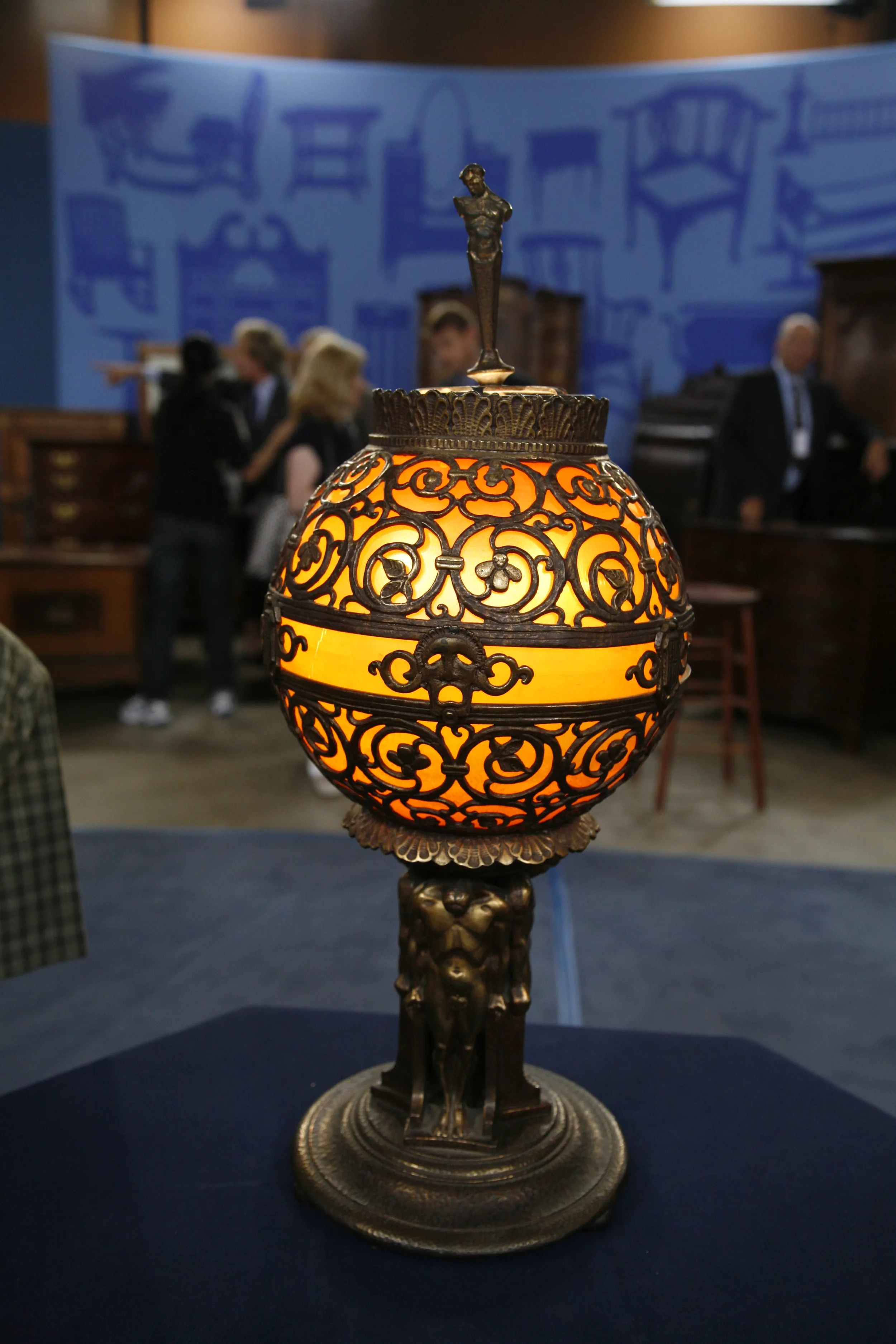GUEST: This was given to me about two and a half years ago from a dear friend who has recently passed away. He purchased it in China, I'm not sure how many years ago. He gave me very little information except that it was supposedly a very nice bronze, and the gold trim on it and the fish were 24 karat. And basically, that's about all that I really know about it.
APPRAISER: Do you know what your friend paid for it, or...?
GUEST: No, I don't.
APPRAISER: It was given as a gift. I don't suppose he wanted to share that.
GUEST: That's right, I didn't ask, and I figured it'd be inappropriate.
APPRAISER: This bronze comes from a golden age in bronze production in the later part of the 19th century.
GUEST: Wow.
APPRAISER: In Japan.
GUEST: Japan, oh.
APPRAISER: It's not Chinese at all.
GUEST: Okay.
APPRAISER: Not tremendously surprising it was purchased in China, but this was made in Japan. During this period, which we call the Meiji period in Japanese history, it followed the abolishment of the samurai class in Japan. The greatest metalsmiths of Japan had to reapply their skills. Following making swords and armor and weapons of war, they applied themselves to making these very fine decorative objects, as you see here. One indication of its origin is, of course, the subject matter, which is very Japanese. In Chinese, they like to depict gods and warriors, and so these simple tradesmen and these simple workmen appealed more to the Japanese aesthetic. Beyond that, though, following the clues, you'll find the piece is actually marked, and there's a mark tucked away on the hem of this gentleman's kimono right here. And what it says is, "Miyao Zo." Miyao was a family of bronze makers in late 19th century Japan. Their work constitutes some of the very best bronze work ever to come out of Japan in this golden age of bronze production. This figure is what's called an okimono, just a decorative statue with really no purpose other than to be a very fine decorative object to go in the home. It's somewhat whimsical, with the fish hanging from the line here on this gentleman's bamboo pole. But what's remarkable is that the fish is there at all. Over the years since this has been in existence, you could see how easily this could have been broken off, lost. Even this wonderful and perfectly textured bamboo fishing pole is of a somewhat fragile and thin nature. You've kept it very well. Those that possessed it before you kept it very well.
GUEST: Right.
APPRAISER: The 24-karat gold that you mention is indeed. We call this a parcel-gilt bronze. It's parcel, just partially gilded. Have you ever had this appraised or have any sense of the value?
GUEST: No, I don't. He had an extensive collection of bronzes. He probably had 15 or 20, and most of them were in the same field. Most of them were much larger.
APPRAISER: I see.
GUEST: And I chose this one because of the size to fit in the secretary.
APPRAISER: This gentleman right here had a good day fishing. You can see from the tails bulging out of his fishing basket he's made a few good catches. Your friend made a good catch as well, and you as a result. I think the auction estimate for this, with the market being somewhat down, I think conservatively, I could put a $3,000 to $5,000 estimate for its sale.
GUEST: Wonderful.
APPRAISER: As the market increases, which I think it's on an upswing, this could easily reach $5,000 to $6,000 within a few years.
GUEST: Wonderful. Super. Very interesting.











